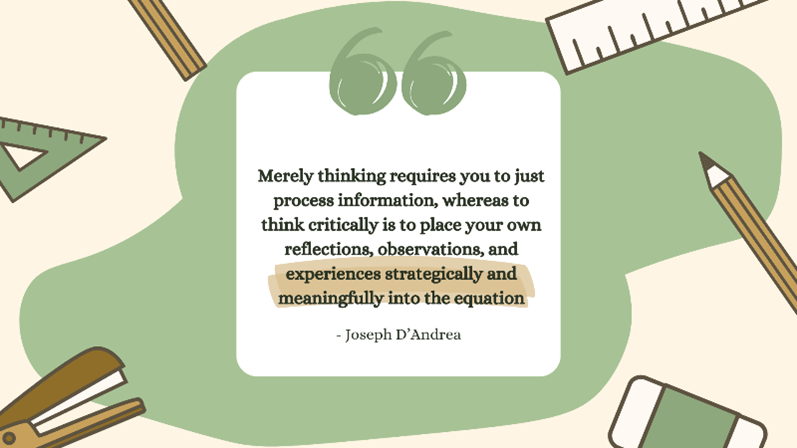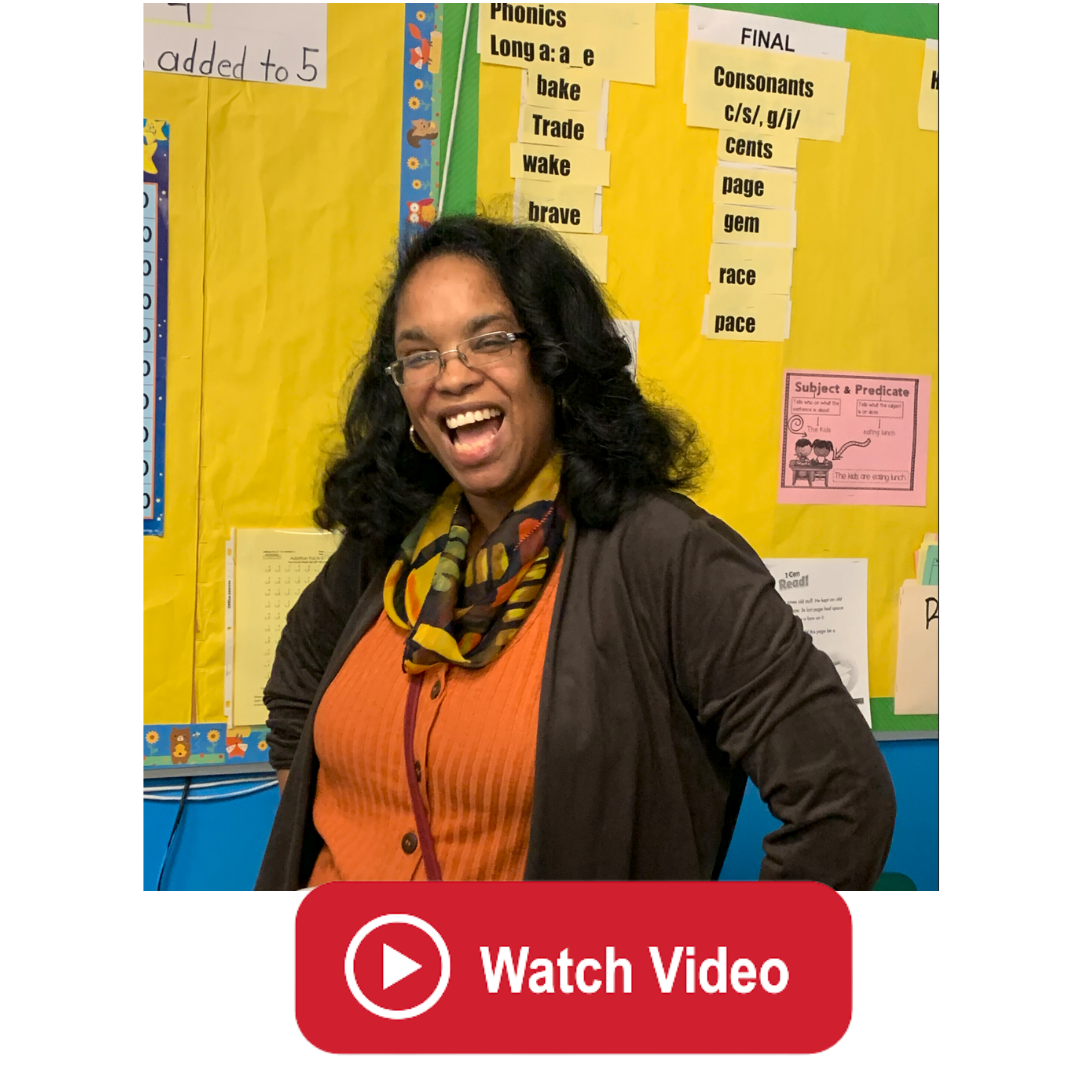Why Teachers Should Foster Critical Thinking in Their Classrooms

In today's world, information is abundant. But simply absorbing facts isn't enough. Equipping students with the ability to analyze, evaluate, and engage critically with information is essential. This is where critical thinking comes in, playing a transformative role in the language arts classroom.
Why Critical Thinking Matters
There is a push for what John Dewey has coined ‘critical thinking’ in the modern classroom. Simply put, critical thinking tasks us with looking beyond the information a text presents.
This generally involves classifying and questioning the nature of a text, with specific attention brought to its structure, language, evidence, and illustrations (Kurland). It goes without saying that critical thinking is a necessity of any learning environment. ‘Critical thinking’, however, has become a type of cliché; for most students, it is not much different than being told to merely ‘think’ about a question.
Despite the meaning of the phrase being numbed in students’ minds overtime, the development of critical thinking skills is essential for students to mature in their thinking, dialogue, and decision-making. Merely thinking requires you to just process information, whereas to think critically is to place your own reflections, observations, and experiences strategically and meaningfully into the equation. It is to put yourself into what is being observed; to transform from a bystander to an active participant. Considering that life itself tasks us with this process of changing from a bystander as a child to an active participant as an adult, it is fundamental to consider deeply what critical thinking is and how it can be applied to classroom instruction because students who can think independently, live independently.
Delving Deeper: What is Critical Thinking?

What exactly is critical thinking? It can take on various shapes and forms, however at its root, critical thinking is about going beyond the surface of a text or argument. It's about actively questioning and analyzing information to understand the underlying message.
This involves “skillfully drawing inferences, making comparisons, determining cause and effects, [and] recognizing the impact a frame of reference has on judgement” (Hayes 2). In other words, rather than piecing together information linearly, a critical thinker deciphers the type of evidence used, the author's purpose, and the intended audience (Kurland). They don't just accept information passively; they ask "Why?" and try to see things from the author's point of view, even if it means stepping outside their own comfort zone.
This uncomfortable exercise is essential for understanding different viewpoints and engaging in meaningful conversations, even when there's strong disagreement. After all, critical thinking might be the key to peaceful discussions and debates about what we hold to be true. It equips individuals to consider various perspectives and arrive at well-informed conclusions, fostering mutual respect and understanding even in the face of differing beliefs.
The Believing Game: A Tool for Cultivating Critical Thinkers
Using this knowledge of critical thinking and what it is, teacher Alan Shapiro developed a strategic method for coercing students in the language arts classroom into thinking critically. He created “the believing game.”
Part of what makes critical thinking so difficult is that handy, yet detrimental human trait of judgement. We naturally form opinions based on what we believe, and these beliefs can differ greatly between individuals. The believing game aims to bridge this gap. It asks students to “suspend judgement, promote continued thought, open oneself to the strengths and values of a perspective with which one does not agree in part or in whole, and work at believing that perspective” (Shapiro 2-3).
In essence, this activity requires students to read a text and focus solely on developing arguments that support the author's viewpoint, even if it clashes with their own beliefs. This seemingly counterintuitive approach is quite effective in the classroom. The believing game pushes students outside their comfort zone and strengthens their critical thinking skills of analyzing different perspectives as it forces them to do something that is contrary to nature; suspend judgment.
Building a Foundation for Lifelong Learning
Critical thinking is not merely an added element to the curriculum, it is the bedrock of a novel study.
When students analyze an author’s purpose and perspective with sincerity, free of judgement, they are preparing themselves for handling all situations and circumstances in their future, regardless of the subject matter. By implementing critical thinking skills into the classroom with methods such as “the believing game”, students will be pushed outside their comfort zones and guided into taking on what critical thinking asks of us: to make inferences, connections, and adapt to a frame of reference that is unfamiliar to our own.

If you’re considering following your dream of teaching, Rutgers Alternate Route can offer you the support and training you need to succeed. Be sure to follow Rutgers Alternate Route on Twitter and sign up for Alternate Route’s monthly newsletter for more information and stories from the field of education.

 Joseph D’Andrea teaches English Language Arts at Randolph High School in New Jersey. An English major in college, Joseph used his knowledge of language and literature to pursue a career in teaching through the Rutgers Alternate Route. The Montclair State University graduate is driven by a passion for sharing his love for literature, connecting with students, and imparting life-enhancing lessons.
Joseph D’Andrea teaches English Language Arts at Randolph High School in New Jersey. An English major in college, Joseph used his knowledge of language and literature to pursue a career in teaching through the Rutgers Alternate Route. The Montclair State University graduate is driven by a passion for sharing his love for literature, connecting with students, and imparting life-enhancing lessons.





